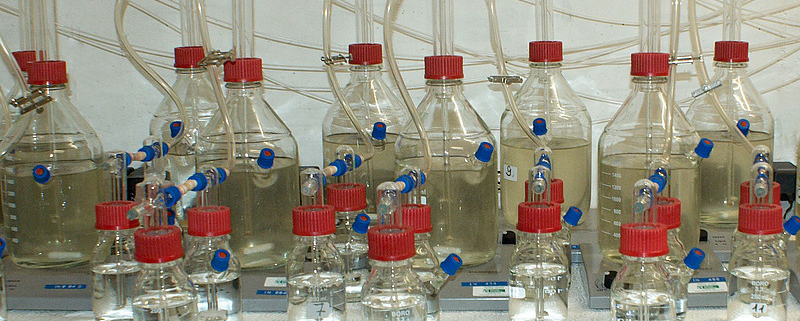Publication on enhanced ready biodegradability screening tests
In persistence assessment, enhanced ready biodegradability tests (eRBT) are used to close the gap between screening tests and complex simulation tests. However, only few data from such tests are available, and neither guidance on the design and interpretation of eRBTs, nor suitable validity criteria have been established so far. In a practical testing programme, five compounds with controversial degradation data were tested in four test series, including a prolonged test duration (60 d), and use of different inocula (activated sludge, sewage effluent), flask sizes, and endpoints (CO2, O2, dissolved organic carbon). The drug ibuprofen and the intermediate 4-fluorophenol were biodegraded by >60% within 28 d within a 10-d window and are, therefore, considered as readily biodegradable. With mean mineralisation rates between 20 and 50%, the pesticide synergist piperonylbutoxide and the antioxidant octadecyl 3-(3,5-di-tert-butyl-4-hydroxyphenyl)propionate were potentially persistent. Mineralisation of the cosmetic ingredient cis-13-docosenonamide (erucamide) was between 36 and 64% after 60 d with activated sludge, and 21% with sewage effluent. Diethylene glycol reached the pass level of 60% mineralisation within 28 d but did not always meet the 10-d window, and thus proved to be a suitable reference substance for eRBTs. Based on the results of the study, recommendations are made for the test design, evaluation and interpretation of enhanced ready biodegradability screening tests. However, a broader data set is required, and the quality and amount of the inoculum should also be considered in future research.
For further information, see the publication in Science of the Total Environment:
Gartiser, S., Brunswik-Titze, A., Flach, F., Junker, T., Sättler, D., Jöhncke, U. (2022). Enhanced ready biodegradability screening tests for the evaluation of potential PBT substances. Science of the Total Environment 833:155134.
Further information on the project can be found here. For additional new publications, see ECT’s publication list.

 Hydrotox - Labor für Ökotoxikologie und Gewässerschutz GmbH
Hydrotox - Labor für Ökotoxikologie und Gewässerschutz GmbH  K. Duis
K. Duis